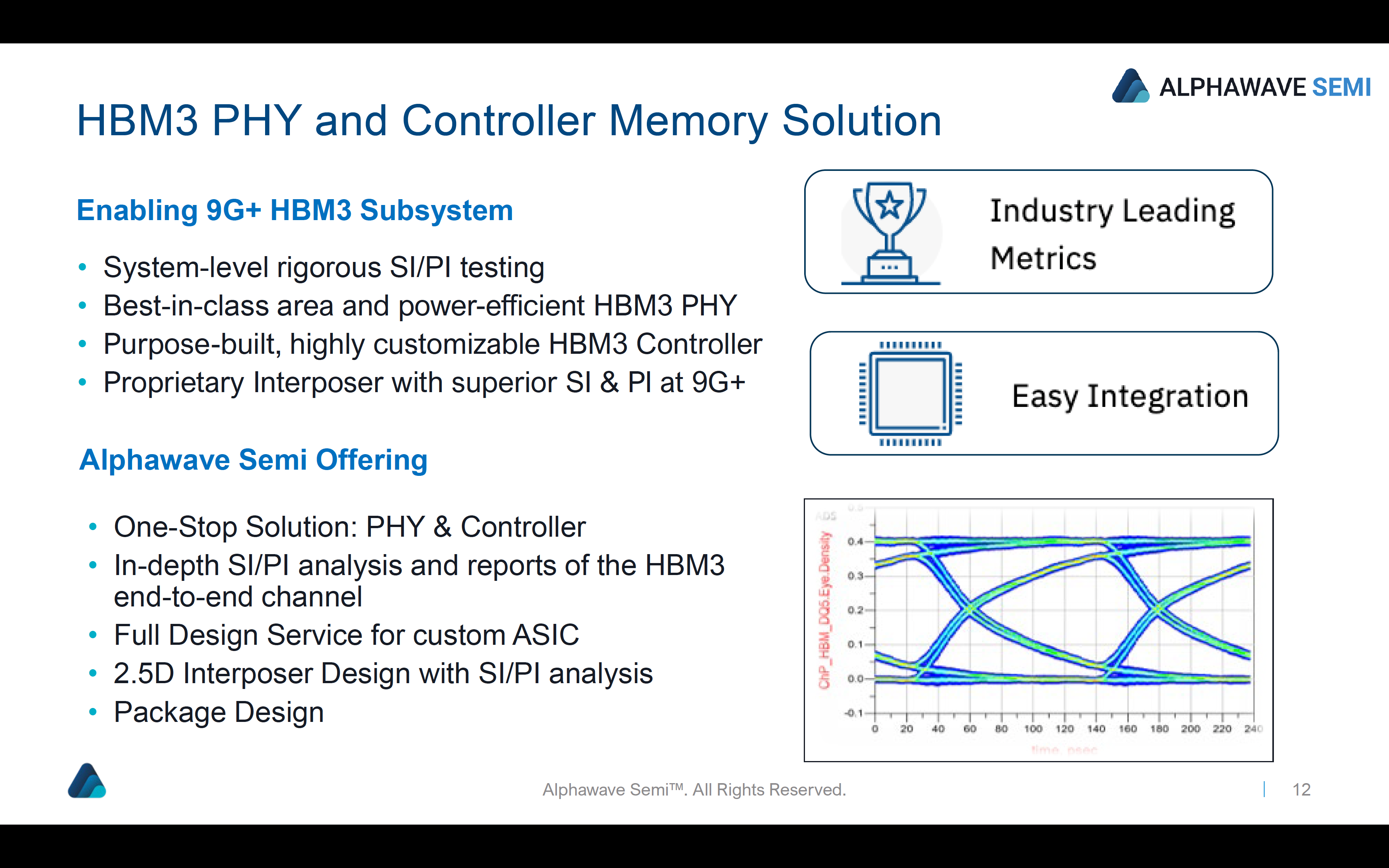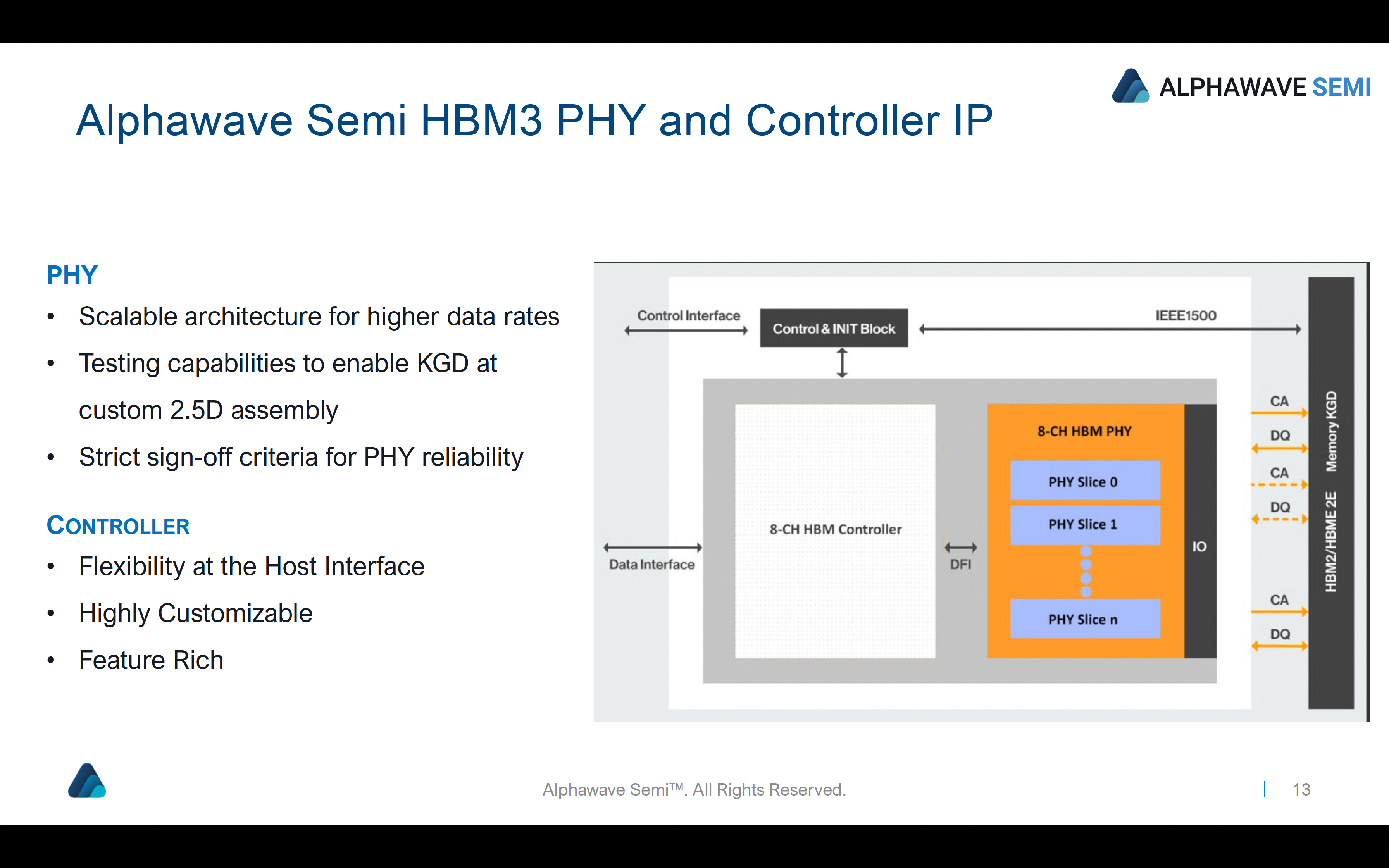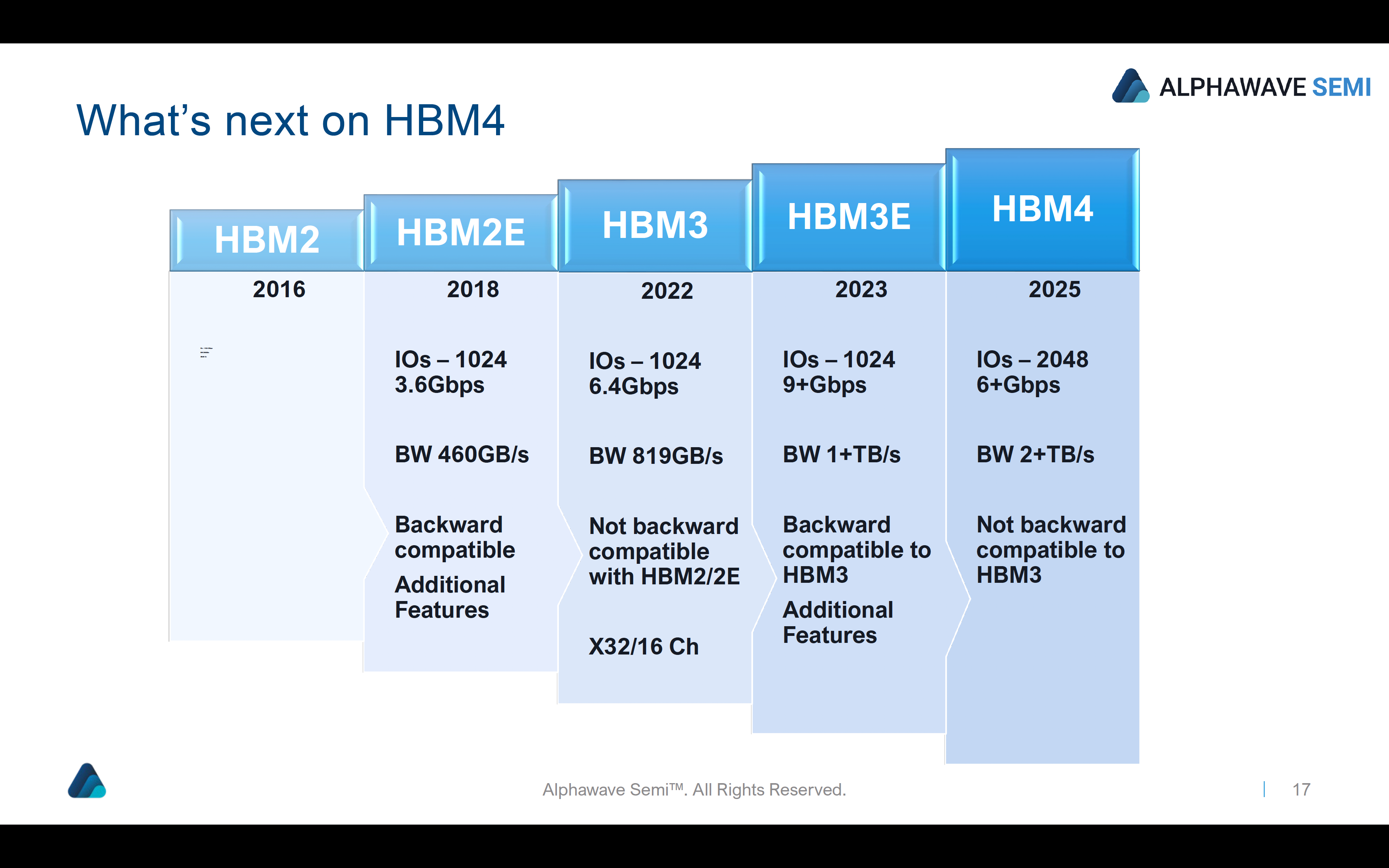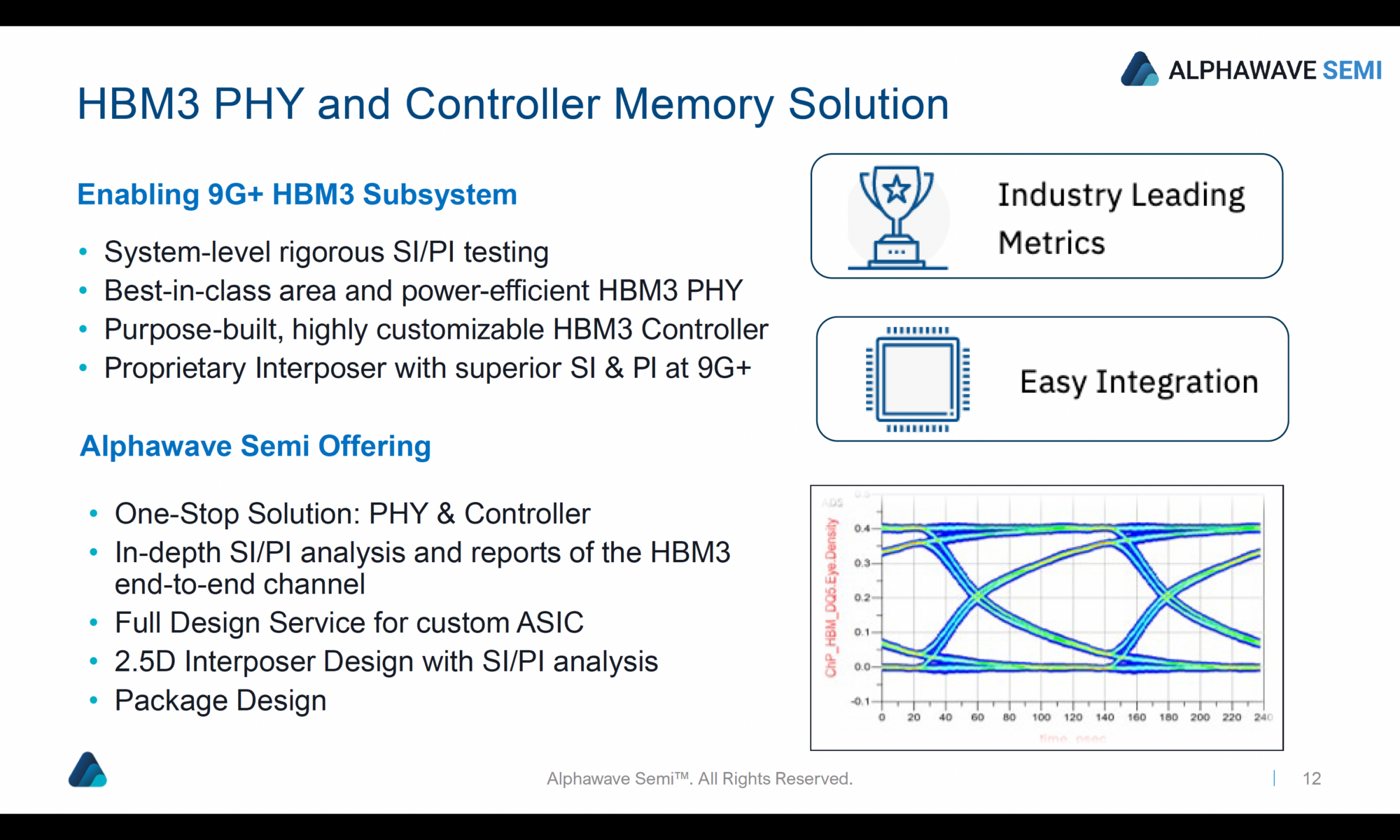In the technology realm of artificial intelligence (AI) and high-performance computing (HPC), the demand for higher throughput and efficiency has never been greater. To meet these evolving demands, innovative memory solutions have emerged as critical enablers, paving the way for transformative advancements in computing capabilities. Among these solutions, High Bandwidth Memory (HBM) technology has risen to prominence, offering unparalleled performance, efficiency, and scalability.
Alphawave Semi recently hosted a webinar on the topic of accelerating AI performance with HBM3+ systems solutions and Alphawave Semi’s comprehensive IP offerings enabling it. The webinar also covered the inherent challenges in implementing HBM3 technology and the system challenges to overcome.
AI Disruption and the Need for Higher Throughput
The AI revolution has ushered in a new era of computing, where machine learning algorithms power everything from virtual assistants to autonomous vehicles. These AI applications rely heavily on data-intensive tasks such as deep learning and neural network training. As AI algorithms demand rapid access to vast datasets for real-time decision-making, they place immense strain on memory systems. Memory-centric architectures are an ideal choice for unmatched levels of bandwidth and energy efficiency for such applications.
Motivation for HBM Memory
Traditional memory architectures, such as DDR and GDDR, have long been the backbone of computing systems. However, the exponential growth of AI workloads has exposed their limitations in handling vast amounts of data with low latency. Traditional memory architectures struggle to keep pace with the demands of AI and HPC workloads, leading to performance bottlenecks and inefficiencies. HBM memory addresses this challenge by stacking multiple memory dies vertically, dramatically increasing memory bandwidth while minimizing power consumption and footprint.
Components in a HBM System
A comprehensive memory system comprises several critical components, each playing a vital role in ensuring optimal performance, power efficiency and reliability. These components include the HBM memory dies, physical layer (PHY), controller, interposer, and packaging techniques. The PHY serves as the interface between the memory dies and the rest of the system, while the controller manages data transfer and access. Interposers provide the necessary connections between memory dies, enabling high-speed communication, while advanced packaging techniques ensure thermal management and signal integrity. The integration of these components into a cohesive system architecture is essential for achieving optimal performance and reliability in AI and HPC applications. Alphawave Semi’s expertise in these components enables customers to deploy robust and efficient HBM memory systems that meet the demands of AI and high-performance computing workloads.
System Challenges: Overcoming Hurdles to Adoption
Despite its transformative potential, the adoption of HBM memory presents several challenges, including thermal dissipation, signal integrity, and power delivery. As memory bandwidth increases, so too does the need for efficient cooling solutions to dissipate heat generated by high-speed data transfer. Signal integrity becomes paramount to ensure reliable communication between memory dies, while optimized power delivery architectures are essential to meet the stringent power requirements of AI applications. Managing heat dissipation, mitigating signal distortion, and optimizing power distribution are critical considerations in designing HBM-based systems. Addressing these challenges requires innovative solutions and close collaboration between chip makers, memory vendors, and package technology providers.
Alphawave Semi addresses these challenges through continuous research and development, providing customers with the tools and expertise needed to overcome system-level obstacles and unlock the full potential of HBM memory technology.
Alphawave Semi IP Offerings
Alphawave Semi offers a comprehensive suite of HBM IP solutions tailored to meet the diverse needs of AI and HPC applications. From high-performance HBM PHY and Controller IP to advanced interposer and package design solutions, Alphawave Semi provides the essential building blocks for creating cutting-edge computing systems. By delivering best-in-class PHY and controller IP, Alphawave Semi enables customers to optimize memory subsystem performance, scalability, and power efficiency for their specific application requirements.


What’s Coming Next with HBM4

Looking ahead, HBM4 promises to further elevate the performance and efficiency of memory-centric architectures. HBM4 will enable even faster and more energy-efficient AI and high-performance computing systems. As the industry continues to innovate and evolve, HBM4 represents the next frontier in memory technology, driving advancements in computing capabilities. Alphawave Semi is at the forefront of HBM4 development, driving innovation and shaping the next generation of memory technology.
Summary
HBM memory solutions offer unparalleled performance, efficiency, and scalability, making them indispensable components of modern computing systems. With Alphawave Semi’s expertise and industry-leading IP offerings, semiconductor companies can harness the full potential of HBM memory to accelerate innovation and drive the next wave of AI disruption. By addressing the challenges of AI disruption, empowering system designers with advanced solutions, and driving the development of future technologies like HBM4, Alphawave Semi is shaping the future of computing and unlocking new possibilities for AI and HPC applications.
The entire webinar can be accessed on-demand here.
For more details about Alphawave Semi’s HBM related IP offerings, visit http://www.awavesemi.com/silicon-ip
Also Read:
Alphawave Semiconductor Powering Progress
Will Chiplet Adoption Mimic IP Adoption?
Share this post via:






Comments
There are no comments yet.
You must register or log in to view/post comments.